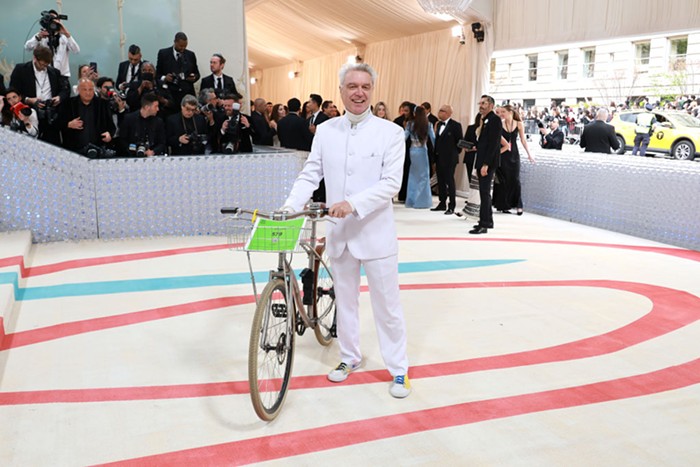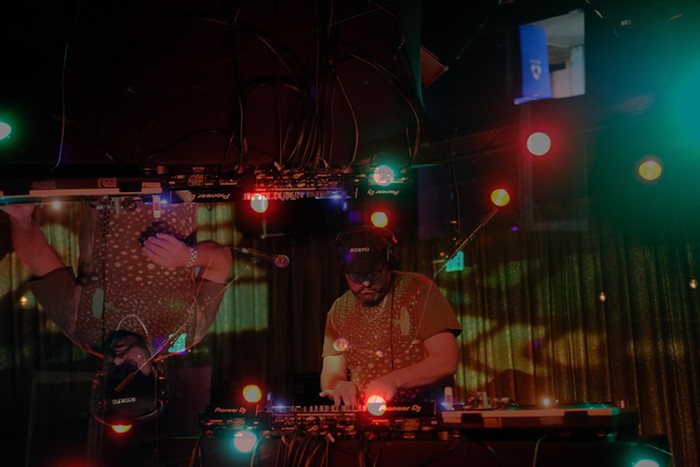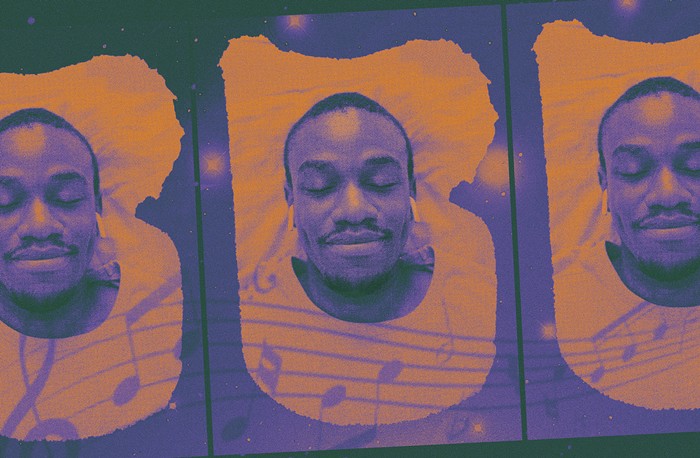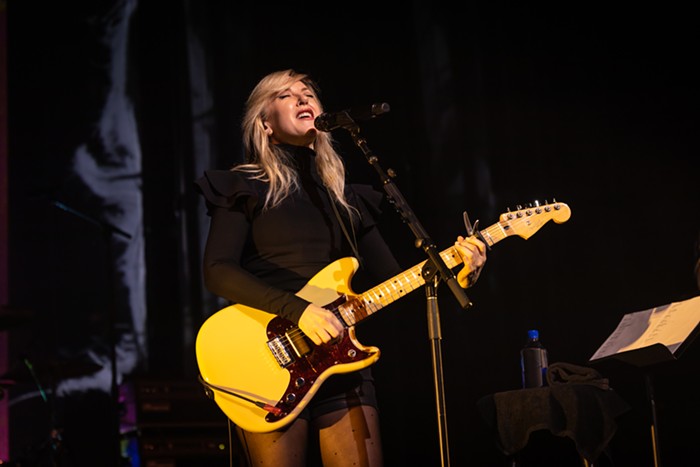An empty nest graces the cover of TV on the Radio's major-label debut, Return to Cookie Mountain. It suggests both shelter and void, a coarse exterior and unknown core. The album sonically embodies such conflicts and contradictions, from the childlike evocation of the title to the matured band configured within.
Not bad for a group whose start came when guitarist/producer David Sitek and singer Tunde Adebimpe met in a Brooklyn loft. "We immediately hit it off," Sitek remembers, "We'd just beatbox and get stoned... drink espresso and smoke grass and paint and draw and make beats. Tunde and I are unemployable."
This set the trend for the group to push at possibilities and experiment restlessly, taking aboard musicians like Kyp Malone, Jaleel Bunton, and Gerard Smith as they toured behind their name-making Desperate Youth, Blood Thirsty Babes. "That certainly added to our intuition about each other's playing," Dave says about living out of a van for over a year. "It certainly helps in the studio."
For all their newfound live power, TV on the Radio's start as a four-track experiment between two friends has crested into an entity equally curious and at home in Sitek's studio: "I've always been interested in solving little musical puzzles, trying to create some kind of sound... that wasn't there before."
It helps that Sitek built his own studio, Stay Gold, right down the hallway from Headgear, the studio where he recorded his band as well as the Yeah Yeah Yeahs' Fever to Tell. "We recorded 26 songs [for Cookie Mountain]. Having the ability to [record] live drums and horn players was just increased tenfold," Sitek enthuses. "I have every musician I know come over at some point, because we do operate like a big family."
The many contributors include everyone from the Antibalas horn section to Grizzly Bear's Chris Taylor, with vocal contributions from Blonde Redhead's Kazu Makino and David Bowie, yet they never overshadow the band's creative dynamic. Most of the album tracks exist in at least four different versions, Sitek explains, noting how the momentum would take over the process, so that "even if individuals had certain ideas on a song, it didn't really matter once the song started to take on our five different personalities."
Opener "I Was a Lover" jostles against its currents: Run-D.M.C.'s "Rock Box," a drunk and destabilized horn blast like something off of a Company Flow track, while the guitars evoke 4AD's hazy heyday of processed guitar hues. Almost every song stacks up innumerable layers, juxtaposing the by-turns gauzy and gritty choirs of Adebimpe and Malone against drum loops broken like vodka bottles ("Method") or backdrops as smoggy as a Brooklyn waste-management plant ("Playhouses"). Sitek chuckles when I ask if songs are exquisite corpses, admitting, "We mostly put it together like Frankenstein."
As the album progresses, such sound clashes and divergent outlooks take on a new cast, appear as two sides of the same coin: grim yet hopeful, resigned to destruction but ecstatic in the moment. "There are some songs that are optimistic, some songs are pessimistic. Some songs are just straight up about fucking; other ones are about transformation." The latter applies to the ferocious single, "Wolf Like Me," which deftly blends themes of lust and lycanthropy. The beast within gets tempered in Sitek's estimation by the group's outlook: "We were approaching it more as historians, just wanting to document what it's like to be a human being right now."
The interview eventually turns to Sitek's tour reading material, John Gray's dour Straw Dogs. He sums it up thus: "The world's overpopulated, we've outgrown our usefulness, but there's this undercurrent of easiness about that. An admission that (a) life is suffering and (b) to resist it is futile. The book never tries to do this, but it accidentally just says what I've always suspected: that pretty much the Buddhists are right." 


















